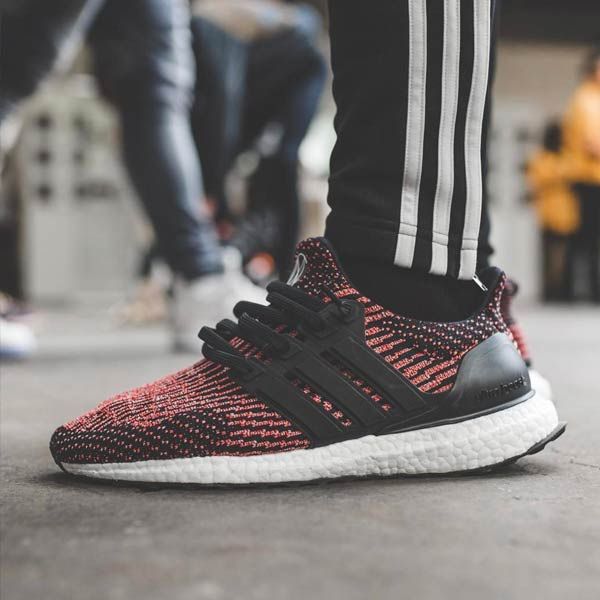

This is to provide more surface area upon impact within the stride. The first of these is that it is quite a bit wider on the forefoot. On the midsole, there are further two changes. That being said, the overall construction of the upper is a lot firmer than on the original 4DFWD. It is slightly softer than the PRIMEKNIT+ material. In contrast, the darker area has a more mesh material finish. This is adidas’ proprietary technology that creates a breathable, sock-like fit for your foot. The outer portion of the upper (the lighter side), features the PRIMEKNIT+ material. More than just a distinction between the colours, it also acts as a support for specific areas. The most notable of these is the grey lining between the contrasting colours on the upper. Irrespective of the difference in colourways, there are numerous small details to pick up. Related: A Step Into the Future with the New adidas 4DFWD 2 Build and Design
Ultraboost 4d on feet upgrade#
As is always the case, the question needing to be asked is whether the brand has improved significantly over the predecessor to upgrade or provide sufficient gains compared to conventional running shoes to justify the cost. With the 4DFWD 2, adidas has fine-tuned many of the shortcomings of the original.

Although it’s still early days in that regard, the 4D midsole has seen plenty of iterations in 2022 across various releases. The long-term idea behind FUTURECRAFT is to manufacture (or print) a shoe for a runner on the fly, which is uniquely customised to their foot, preferences and style. The 4D midsole was based on the research initiatives started in 2016 as part of the FUTURECRAFT project.

Ultraboost 4d on feet update#
Now, in 2022, the brand released the update to this in the adidas 4DFWD 2. As such, I was lucky enough to cover the first iteration of the 4DFWD running shoe, which was a completely unique experience as a long-time runner. The running shoe wasn’t widely available, and it wasn’t until 2021 that the brand made it more accessible, while also reducing the price a bit. It featured the first 4D midsole, printed using Carbon Digital Light Synthesis™, or DLSTM. If you can get them on discount, I highly recommend them.In 2019, adidas launched its first iteration of the 4D sneaker. For people who want to try the tech and feel hesitant like me, I suggest you buy them. But it just dissipate the impact instead of bouncing it. Don't get me wrong, it still absorbs the impact when you walk. While walking, it doesn't have that springy/bouncy feel like UB, but more like bare foot feel.

The 4D on the other hand, didn't give me sore feet when standing for long period of time (maybe 4D supports and distribute evenly?). The soreness however will tone down after I start walking again. Especially when standing for long period of time (maybe due to fatigue?). I noticed when wearing the UB4.0 for daily commute, my heel and mid foot get sore overtime. Sure the midsole is not squishy or spongy as UB, however it is still comfortable. And my experience with them is not as bad what people say. So last week, I coped Ultra4D 5.0 as it was on sale (50%). I had a UB 4.0 and I was in hesitant to buy 4D shoe as when I look around reddit posts, comments and YouTube, they say it is not comfortable as UB. But I just want to share my thought on UB vs 4D.


 0 kommentar(er)
0 kommentar(er)
